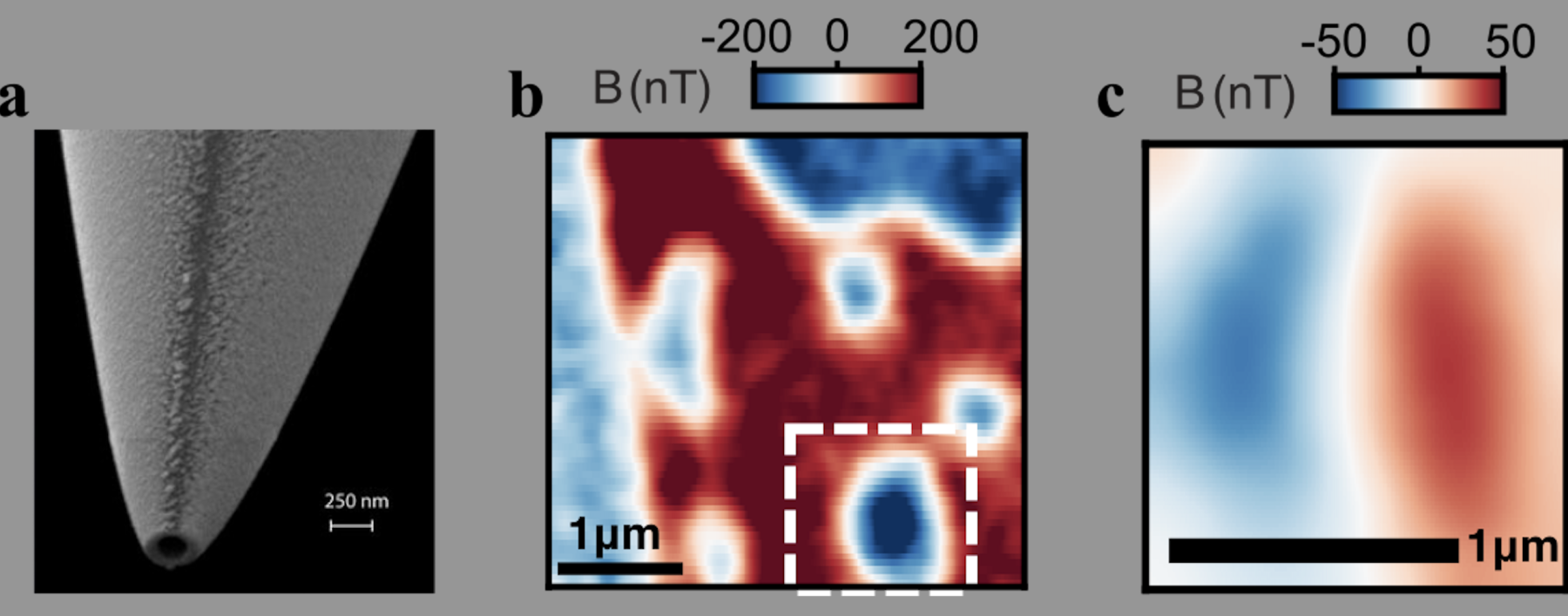
Spin canting in spin-orbit coupled rhombohedral graphene
Multi-layer rhombohedral graphene (RG) is an emerging quantum material hosting controllable correlated electron physics. In recent years various forms of RG have been revealed to host a variety of exciting phenomena including iso-spin ferromagnetism, intervalley coherence, novel superconductivity, and fractional Chern insulators.1–5 Key to this physics is correlations between electrons that arise in locally flat bands, which in RG are controllable using electrostatic gates, leading to a clean and highly controllable platform for topological quantum states of matter.
Recent work has highlighted the importance of spin-orbit coupling (SOC), which can be tuned in RG using stack engineering of 2D material. Graphene intrinsically has low spin-orbit coupling 5 which can be strongly enhanced by stacking it next to a transition metal dichalcogenide such as WSe2 which raises the spin orbit coupling of electrons via the proximity effect.3,6,7 The resulting heterostructure shows significantly alterations of superconductivity and iso-spin ferromagnetism relative to ‘bare’ RG with low spin orbit coupling, leading to questions about the role of spin order in the quantum phases of RG.
Examining the magnetism of RG provides a way to answer these questions. Using the scanning nanoSQUID on Tip (nSOT) technique we are able to measure the local surface magnetic field of dual gates Rhombohedral trilayer graphene (RTG) with nano-Tesla sensitivity and ultra-high spatial resolution, as shown schematically in Fig. 1. The local pattern of fringe magnetic field at the surface of the sample offers clues to nature of the magnetic ground state. Fig 2b shows a RTG sample in an orbital ferromagnetic phase with strong out of plane magnetization, showing multiple ‘holes’ which will exhibit different magnetic spatial patterns depending on the direction of the magnetization. Using this effect, Fig 2c shows the dipole-like spatial signature of in-plane magnetism above a hole when the RTG is tuned into a spin-polarized “half metal”, consistent with spin canting.
Using this type of experiment, our latest paper8 shows that proximal WSe2 introduces SOC that significantly modulates the spin ferromagnetism of RTG. Without WSe2 spin polarized RTG is a Heisenberg ferromagnet, but the induced spin orbit coupling locks the spin magnetism into the 2D plate of the graphene, i.e. an easy-plane ferromagnet. This effect is fine-tuned, depending on a balance between different interacting effects in the graphene, causing varied spin ordering within the symmetry broken phases of graphene. Curiously, this in-plane spin canting is correlated with modulation of the superconductivity of RTG, which has implications for unconventional superconductivity now observed across many forms of multi-layer graphene.
References:
1. Zhou, H. et al. Half- and quarter-metals in rhombohedral trilayer graphene. Nature 598, 429–433 (2021).
2. Zhou, H., Xie, T., Taniguchi, T., Watanabe, K. & Young, A. F. Superconductivity in rhombohedral trilayer graphene. Nature 598, 434–438 (2021).
3. Han, T. et al. Signatures of Chiral Superconductivity in Rhombohedral Graphene. Preprint at https://doi.org/10.48550/arXiv.2408.15233 (2024).
4. Choi, Y. et al. Electric field control of superconductivity and quantized anomalous Hall effects in rhombohedral tetralayer graphene. Preprint at https://doi.org/10.48550/arXiv.2408.12584 (2024).
5. Arp, T. et al. Intervalley coherence and intrinsic spin–orbit coupling in rhombohedral trilayer graphene. Nat. Phys. 1–8 (2024) doi:10.1038/s41567-024-02560-7.
6. Zhang, Y. et al. Enhanced superconductivity in spin–orbit proximitized bilayer graphene. Nature 613, 268–273 (2023).
7. Zhang, Y. et al. Twist-Programmable Superconductivity in Spin-Orbit Coupled Bilayer Graphene. Preprint at https://doi.org/10.48550/arXiv.2408.10335 (2024).
8. Patterson, C. L. et al. Superconductivity and spin canting in spin-orbit proximitized rhombohedral trilayer graphene. In press at Nature. Preprint at https://doi.org/10.48550/arXiv.2408.10190 (2024).